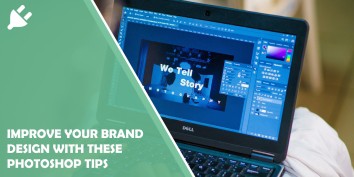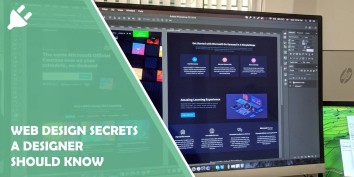Your brand's design can make or break your product. With such an important role, it's…
Design handoff is a critical stage in the design process where designers transfer their work to developers or stakeholders for implementation. A well-executed design handoff ensures smooth collaboration, reduces miscommunication, and ultimately leads to a more efficient development process. In this article, we will explore how to design a better design handoff file using Figma, a popular design tool, to facilitate seamless collaboration and improve the overall handoff experience.

1. Organize and Structure Your Design File
Before starting the design handoff process, it’s crucial to organize and structure your Figma file in a logical and intuitive manner. Create separate artboards or frames for different screens, components, or sections of your design. This makes it easier for developers to navigate through the file and locate the specific elements they need. Consider using naming conventions and grouping similar components together for further clarity.
2. Annotate and Document Design Decisions
Providing clear documentation and annotations within the design file is essential for effective design handoff. Use Figma’s built-in comment feature to annotate specific design decisions, interactions, or functionalities. This allows developers and stakeholders to understand the rationale behind design choices, providing context and reducing the likelihood of misinterpretation. Additionally, consider creating a separate page or document within Figma to provide detailed explanations, guidelines, and specifications for the design elements.
3. Create Design Specifications
Design specifications help developers understand the technical details of the design, including dimensions, spacing, typography, and color codes. Figma provides robust tools for generating design specifications automatically. Utilize features like “Inspect” to extract CSS values, export assets, and share style guides. By providing accurate and comprehensive design specifications, you ensure consistency and save developers’ time by eliminating the need for manual measurement or guesswork.

4. Use Components and Styles
Leveraging Figma’s component and style functionalities can greatly enhance the design handoff process. By creating reusable components for common UI elements and utilizing shared styles for colors, typography, and other design attributes, you establish a consistent design system. This not only ensures visual coherence but also simplifies the development process. Developers can easily access and use the predefined components and styles, saving time and reducing the chances of design inconsistencies.
5. Include Interactions and Microinteractions
Design handoff is not just about static visuals; it also involves conveying the desired user interactions and microinteractions. Use Figma’s interactive prototyping features to create interactive hotspots, transitions, and animations. This allows developers to understand the intended user experience and implement the required interactions accurately. Providing a prototype or demonstration of the expected interactions within the design handoff file fosters clearer communication and alignment between designers and developers.
6. Collaborate and Gather Feedback
Design handoff is a collaborative process, and it’s essential to involve developers and stakeholders throughout. Share the Figma file with the relevant team members and encourage them to review and provide feedback directly within the file. Figma’s collaboration features allow for real-time discussions and iterative improvements. Regularly engage in discussions, address questions or concerns, and iterate on the design based on the feedback received. This collaborative approach enhances understanding, fosters a sense of ownership, and ensures a smoother handoff process.
7. Provide Ongoing Support
The design handoff process doesn’t end with delivering the design file. As developers work on implementing the design, be available for ongoing support and clarifications. Maintain open lines of communication to address any questions or challenges that arise. This proactive support not only helps in resolving issues but also strengthens the designer-developer relationship, leading to better collaboration in future projects.
Design handoff is a crucial phase in the design process, and by designing a better handoff file in Figma, designers can streamline collaboration, reduce miscommunication, and improve the overall development process. By organizing and structuring the file, providing clear documentation and annotations, generating design specifications, utilizing components and styles, including interactions, collaborating effectively, and offering ongoing support, designers can ensure a smooth and efficient handoff experience. Figma’s powerful features and collaborative environment make it an ideal tool for creating design handoff files that foster understanding, alignment, and successful implementation of designs.






